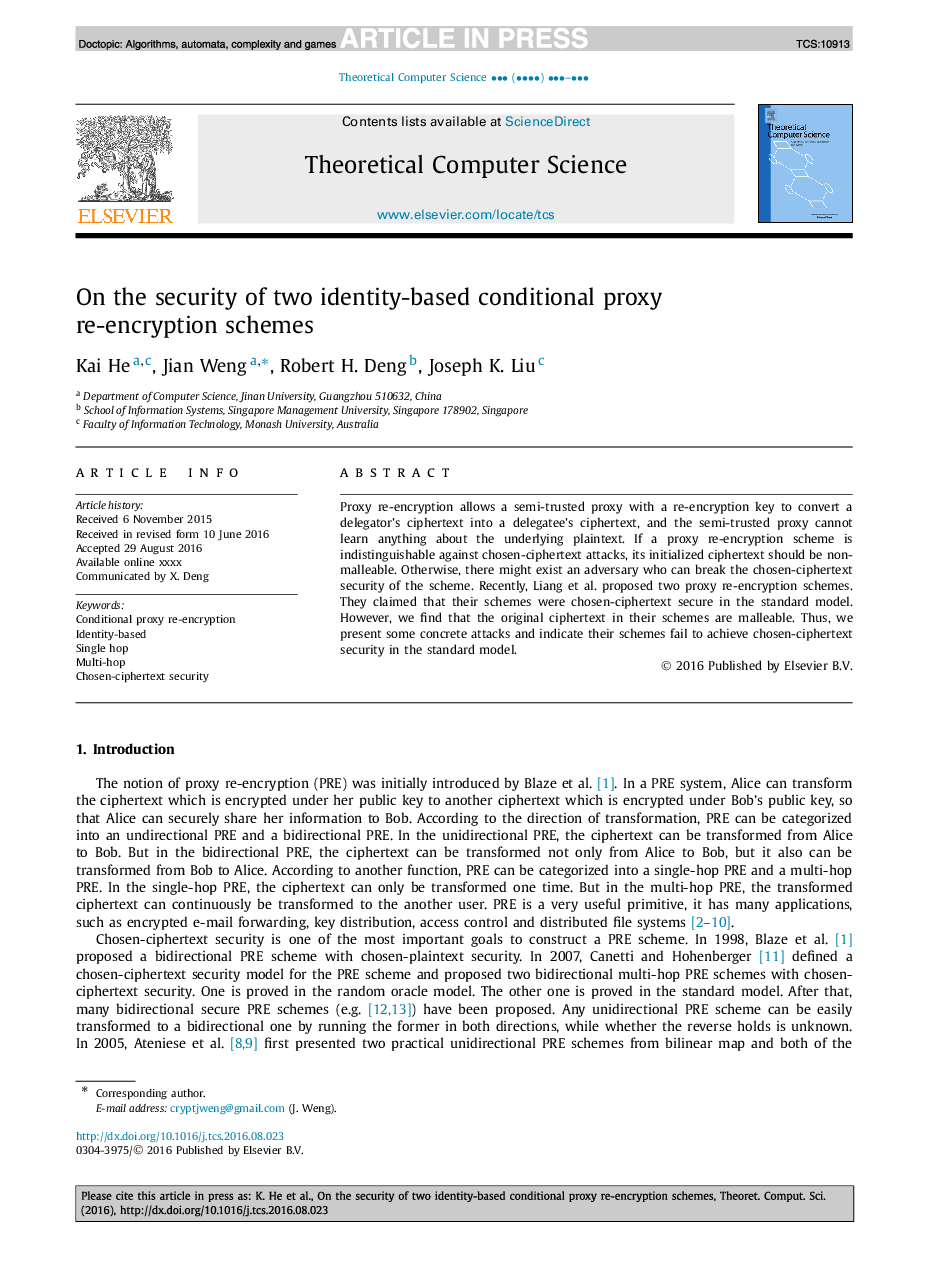| Article ID | Journal | Published Year | Pages | File Type |
|---|---|---|---|---|
| 4952334 | Theoretical Computer Science | 2016 | 10 Pages |
Abstract
Proxy re-encryption allows a semi-trusted proxy with a re-encryption key to convert a delegator's ciphertext into a delegatee's ciphertext, and the semi-trusted proxy cannot learn anything about the underlying plaintext. If a proxy re-encryption scheme is indistinguishable against chosen-ciphertext attacks, its initialized ciphertext should be non-malleable. Otherwise, there might exist an adversary who can break the chosen-ciphertext security of the scheme. Recently, Liang et al. proposed two proxy re-encryption schemes. They claimed that their schemes were chosen-ciphertext secure in the standard model. However, we find that the original ciphertext in their schemes are malleable. Thus, we present some concrete attacks and indicate their schemes fail to achieve chosen-ciphertext security in the standard model.
Related Topics
Physical Sciences and Engineering
Computer Science
Computational Theory and Mathematics
Authors
Kai He, Jian Weng, Robert H. Deng, Joseph K. Liu,
